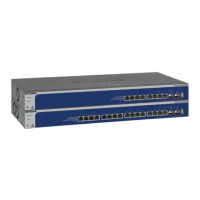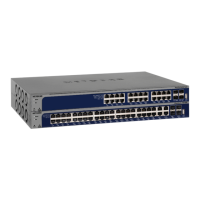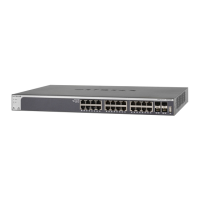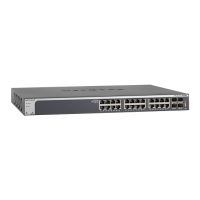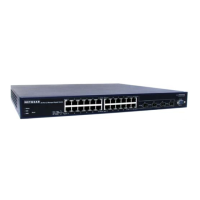Configure Quality of Service
242
XS708T, XS712Tv2, and XS716T Smart Managed Pro Switch User Manual
Configure DiffServ Settings
Packets are filtered and processed based on defined criteria. The filtering criteria is defined
by a class. The processing is defined by a policy's attributes. Policy attributes can be defined
on a per-class instance basis, and it is these attributes that are applied when a match occurs.
The configuration process begins with defining one or more match criteria for a class. Then
one or more classes are added to a policy. Policies are then added to interfaces.
Packet processing begins by testing the match criteria for a packet. The All class type option
specifies that each match criteria within a class must evaluate to true for a packet to match
that class. The Any class type option specifies that at least one match criteria must evaluate
to true for a packet to match that class. Classes are tested in the order in which they were
added to the policy. A policy is applied to a packet when a class match within that policy is
found.
DiffServ Configuration
Use the DiffServ Configuration page to display DiffServ general status group information,
which includes the current administrative mode setting as well as the current and maximum
number of rows in each of the main DiffServ private MIB tables.
To configure the global DiffServ mode:
1. Connect your computer to the same network as the switch.
You can use a WiFi or wired connection to connect your computer to the network, or
connect directly to a switch that is off-network using an Ethernet cable.
2. Launch a web browser.
3. In the address field of your web browser, enter the IP address of the switch.
If you do not know the IP address of the switch, see Change the Default IP Address of the
Switch on page 10.
The login window opens.
4. Enter the switch’s password in the Password field.
The default password is password.
The System Information page displays.
5. Select QoS > DiffServ > Advanced > DiffServ Configuration.
